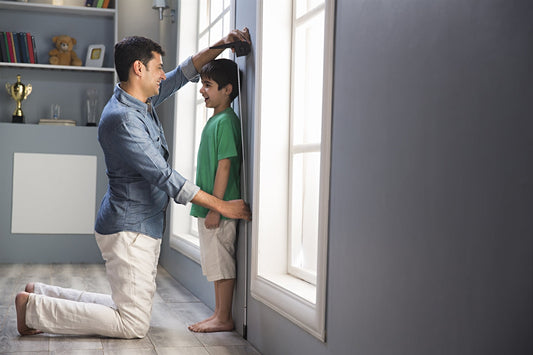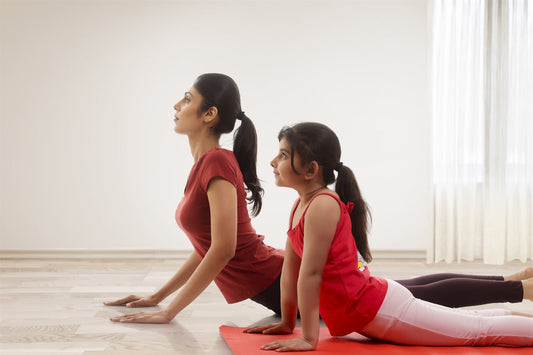It allows children to develop and further improve their gross and fine motor skills. As they extend their limbs and bodies to grasp, pick, and move blocks, the muscles of their fingers, hands, and arms strengthen.
6. Stacking Toys
An extension of building blocks, stacking toys are also a good practice for gripping objects. Usually colourful, they come in different shapes and require stacking pieces of a particular shape and size. When kids are at the age of two, they start to comprehend shapes, so these toys can provide a different level of challenge to develop their fine motor skills and shape-size differentiation.
7. Tinkering Toys And Tool Sets
These toys require the child to twist, turn, pull and place objects in a hole, thus developing their fine motor skills. It makes them practice gripping and twisting, as they go about tinkering open-ended and preset projects with screws, fasteners, and bolts using either their bare hands or a tool, such as a wrench.
8. Do-It-Yourself Crafts
Toys made of recyclables, household items, and craft supply can also help in the development of your child’s motor skills. As the child works his/her way through the challenge – pushing, pulling, twisting, turning, poking, cutting, dropping, clipping, pinching, tying, stacking, buttoning, and flicking – their gross and fine motor skills are put to practice.
9. Drawing
While colouring and drawing, children develop the correct pen and pencil grip they need for writing in their school years. So, crayons, non-toxic paint and brush sets, and colour pencils benefit young kids as their developing fingers learn to grasp these objects whilst drawing on colouring books and pads.
10. Puzzles
Puzzles are engaging and enjoyable toys for children to that helps them develop and refine their fine motor skills. When playing with puzzles, the child grips, lifts, and moves knobs, pegs or chunky objects sorting and pinching them to fit into a slot. There is a trial-and-error process, which entails hand-eye manipulation for the child to place the right object in the right slot.

Along with these activities, nutrition also plays an important role in the development of the motor skills. But given that kids are so picky about food, it can be difficult for you to get them to eat enough of everything, right? Well, adding Junior Horlicks# to their diet can help bridge the nutritional gaps since it contains nutrients like Choline, Iron, Iodine, etc., which are known to support brain development, as well as calcium, Vitamin D, vitamin K & Protein which are known to support physical growth and development. It also contains nutrients such as Vit E, A, selenium & copper to support healthy immune function.







